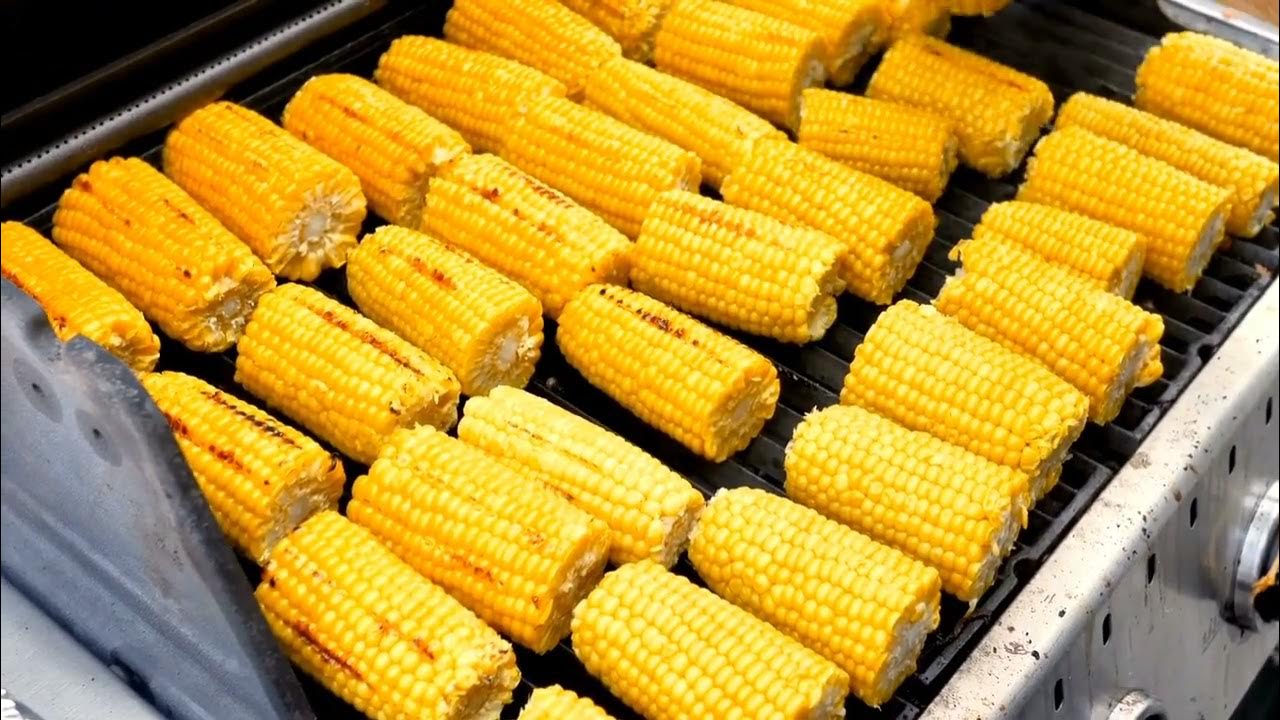Ekstrusi - Teknologi Pengolahan Pangan Berkelanjutan
Summary
TLDRThe video showcases the innovative use of extrusion technology in food processing, focusing on turning local crops like cassava, sorghum, and sago into convenient snack products. Researchers at UGM's Department of Agricultural Engineering are developing sustainable, protein-enriched snacks using various local flours. The process includes mixing, cooking, and shaping ingredients through an extruder, with the products being tested for texture. This research aligns with Indonesia's food sovereignty goals and supports the SDG 2 'Zero Hunger' initiative by promoting locally sourced, nutritious foods for improved food security.
Takeaways
- 😀 The speaker emphasizes the abundant availability of local food ingredients like corn, cassava, sorghum, and sago that are widely used in food processing.
- 😀 There is a gap in the development of these ingredients, and sago, despite government promotion, faces challenges in processing.
- 😀 The innovation involves combining sago with corn to create a snack product that is ready for direct consumption.
- 😀 The speaker, Joko Nugroho Wahyu Karyyati, is from the Department of Agricultural Engineering and Biosystems at UGM's Faculty of Agricultural Technology.
- 😀 The project focuses on food processing using extrusion technology, which is energy-efficient and increasingly popular in the industry.
- 😀 Extrusion technology uses an extruder machine with key components like the feeder and screw extruder, which mix, cook, and shape food products.
- 😀 The shaping process allows the production of various food forms, such as cylindrical or star-shaped snacks, depending on the design.
- 😀 A texture analyzer is used to test the hardness of the processed food, measuring the force needed to chew, indicating the snack's texture.
- 😀 The project has evolved over three years, initially using simple ingredients like corn and gaplek flour, and later introducing soy flour and red bean flour to enhance protein content.
- 😀 The research aligns with Indonesia's sustainable food processing goals, using locally available ingredients like sago and other regional flours to support food sovereignty and help address hunger.
Q & A
What is the main objective of the research mentioned in the transcript?
-The main objective is to innovate in food processing by utilizing local ingredients, such as sago and corn, to create snack products that are ready for consumption, contributing to food sovereignty and addressing the issue of zero hunger.
What food ingredients are being explored in the research?
-The research explores a variety of local food ingredients, including corn, cassava, sorghum, sago, soybean flour, and red bean flour, which are being used to develop food products.
What is the purpose of using extrusion technology in the food processing method?
-Extrusion technology is used in the research because it is an efficient and energy-saving method for producing food products. It allows for the mixing, forming, and shaping of ingredients into various snack forms.
How does the extrusion process work in food production?
-The extrusion process involves a machine called an extruder. Ingredients are fed into a hopper feeder, where they undergo mixing, cooking, and shaping into different forms, such as cylinders or stars, depending on the desired product shape.
What are the key components of an extruder machine?
-The key components of an extruder machine include a feeder, a cooking component (screw), and a die for shaping the product. These components work together to create the desired food product.
What role does the texture analyzer play in the food production process?
-The texture analyzer tests the hardness of the food products, measuring how much force (in Newtons) is needed to break the product. This helps in understanding how easy or hard it is to chew the snack, ensuring it meets the desired texture.
What types of flour are used in the development of snack products?
-Various types of flour are used in the development, including corn flour, cassava flour (including fermented cassava flour), soybean flour, and local flours such as sago and sorghum flour.
Why is there a focus on using local ingredients like sago and sorghum?
-Local ingredients such as sago and sorghum are abundant but underutilized in food processing. The research aims to innovate their use, making them viable ingredients for mass-produced snack foods, thus supporting local agriculture and reducing dependency on imported materials.
What is the significance of the research in relation to food sovereignty and zero hunger?
-The research contributes to food sovereignty by promoting the use of locally sourced, abundant ingredients to create food products. It directly supports the goal of zero hunger by utilizing these resources to provide affordable, accessible food options.
How does the research align with the Indonesian government's focus on food sustainability?
-The research aligns with the Indonesian government's focus on food sustainability by developing new ways to process and utilize local crops like sago and sorghum, which are part of the government's initiative to promote sustainable food production and reduce dependence on imported ingredients.
Outlines

This section is available to paid users only. Please upgrade to access this part.
Upgrade NowMindmap

This section is available to paid users only. Please upgrade to access this part.
Upgrade NowKeywords

This section is available to paid users only. Please upgrade to access this part.
Upgrade NowHighlights

This section is available to paid users only. Please upgrade to access this part.
Upgrade NowTranscripts

This section is available to paid users only. Please upgrade to access this part.
Upgrade NowBrowse More Related Video

Jurus RI Atasi Ketergantungan Pangan & Pupuk Impor

Rangkuman Materi Prakarya Kelas 8 Bab 5 Produk Pangan Setengah Jadi

Menyimak Teks Argumentasi

Indonesia Tiap Tahun Impor Bahan Makanan. Tapi Kenapa?

Resep Praktis mengolah pangan lokal👩🍳👨🍳 Anak-anak dan remaja wajib tonton!!!!

Extrusion Cooking Overview - Part 1
5.0 / 5 (0 votes)